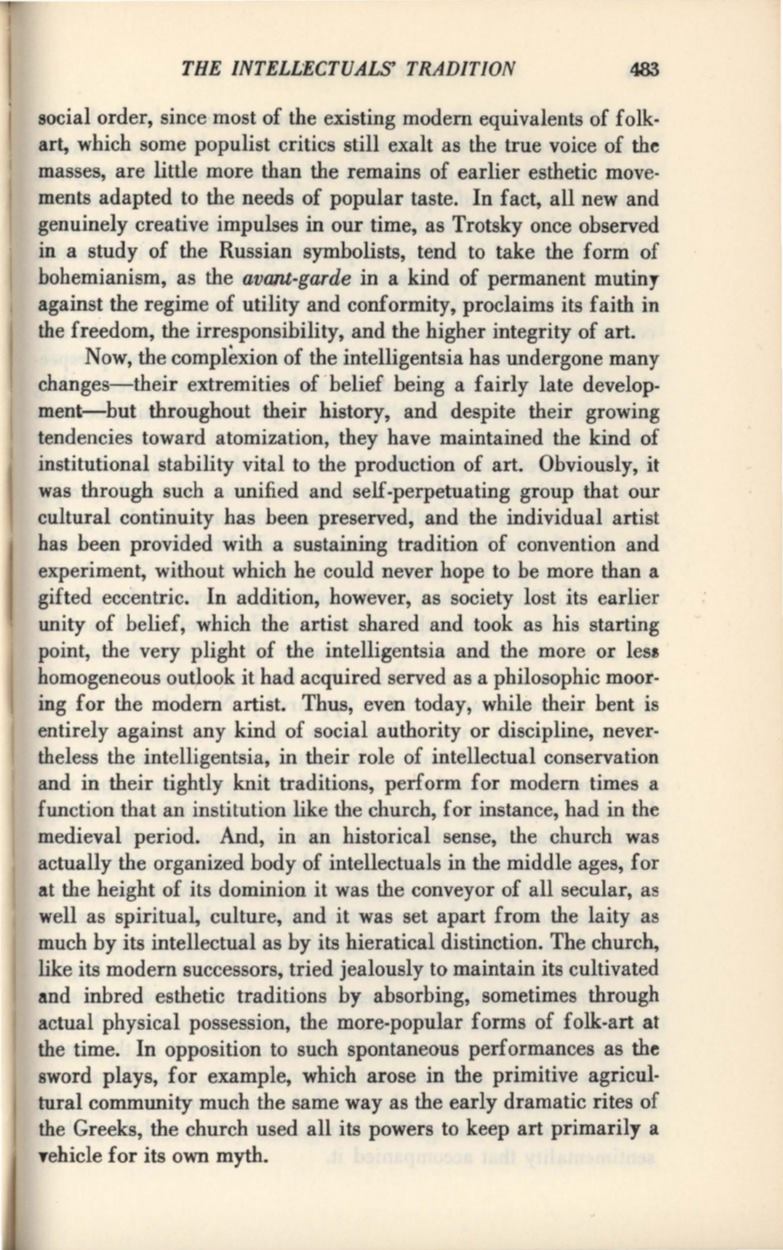
THE INTELL'ECTUALS' TRADITION
483
social order, since most of the existing modern equivalents of folk–
art, which some populist critics still exalt as the true voice of the
masses, are little more than the remains of earlier esthetic move–
ments adapted to the needs of popular taste. In fact, all new and
genuinely creative impulses in our time, as Trotsky once observed
in a study of the Russian symbolists, tend to take the form of
bohemianism, as the
avO!U-garde
in a kind of permanent mutiny
against the regime of utility and conformity, proclaims its faith in
the freedom, the irresponsibility, and the higher integrity of art.
Now, the complexion of the intelligentsia has undergone many
changes-their extremities of belief being a fairly late develop–
ment-hut throughout their history, and despite their growing
tendencies toward atomization, they have maintained the kind of
institutional stability vital to the production of art. Obviously, it
was through such a unified and self-perpetuating group that our
cultural continuity has been preserved, and the individual artist
has been provided with a sustaining tradition of convention and
experiment, without which he could never hope to be more than a
gifted ecc'entric. In addition, however, as society lost its earlier
unity of belief, which the artist shared and took as his starting
point, the very plight of the intelligentsia and the more or
les~
homogeneous outlook it had acquired served as a philosophic moor–
ing for the modern artist. Thus, even today, while their bent is
entirely against any kind of social authority or discipline, never–
theless the intelligentsia, in their role of intellectual conservation
and in their tightly knit traditions, perform for modern times a
function that an institution like the church, for instance, had in the
medieval period. And, in an historical sense, the church was
actually the organized body of intellectuals in the middle ages, for
at the height of its dominion it was the conveyor of all secular, as
well as spiritual, culture, and it was set apart from the laity as
much by its intellectual as by its hieratical distinction. The church,
like its modern successors, tried jealously to maintain its cultivated
and inbred esthetic traditions by absorbing, sometimes through
actual physical possession, the more-popular forms of folk-art at
the time. In opposition to such spontaneous performances as the
sword plays, for example, which arose in the primitive agricul–
tural community much the same way as the early dramatic rites of
the Greeks, the church used all its powers to keep art primarily a
Tehicle for its own myth.


